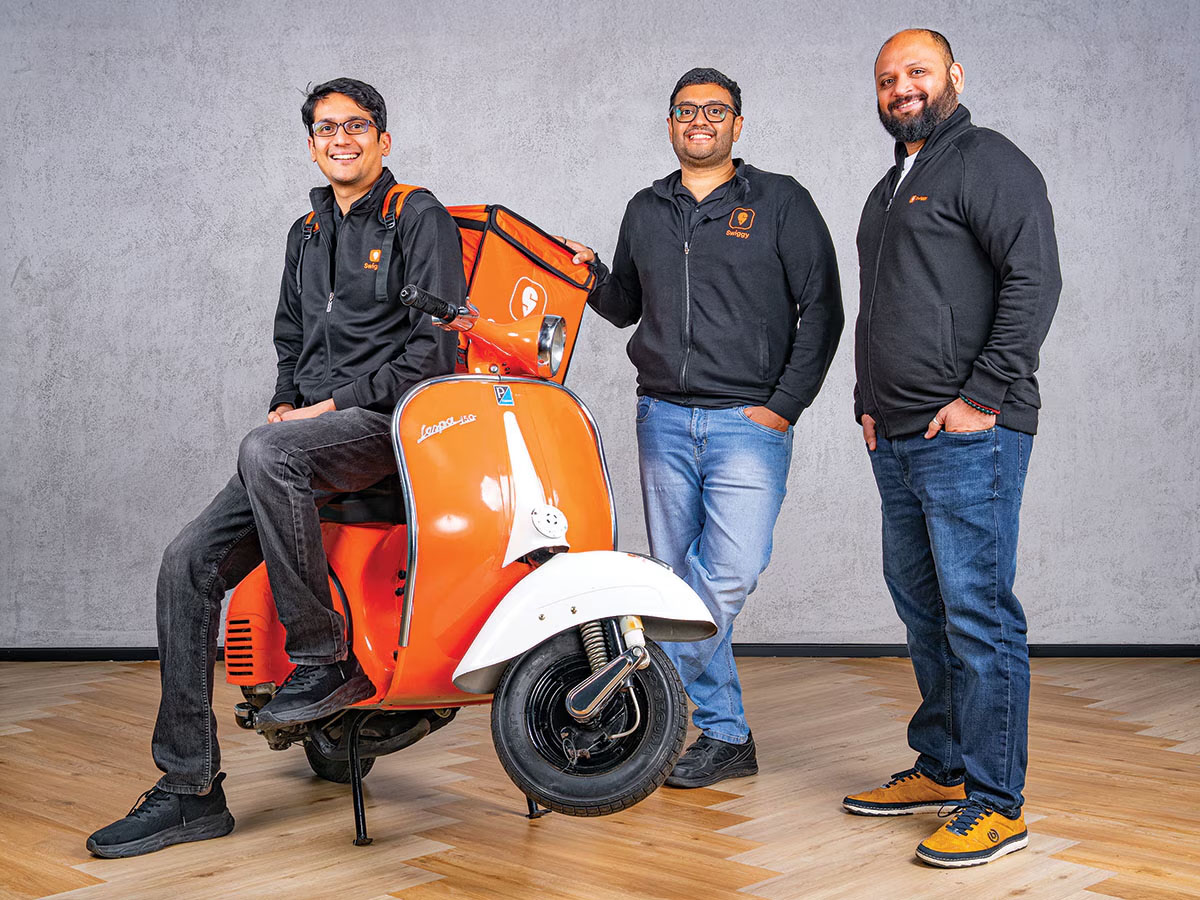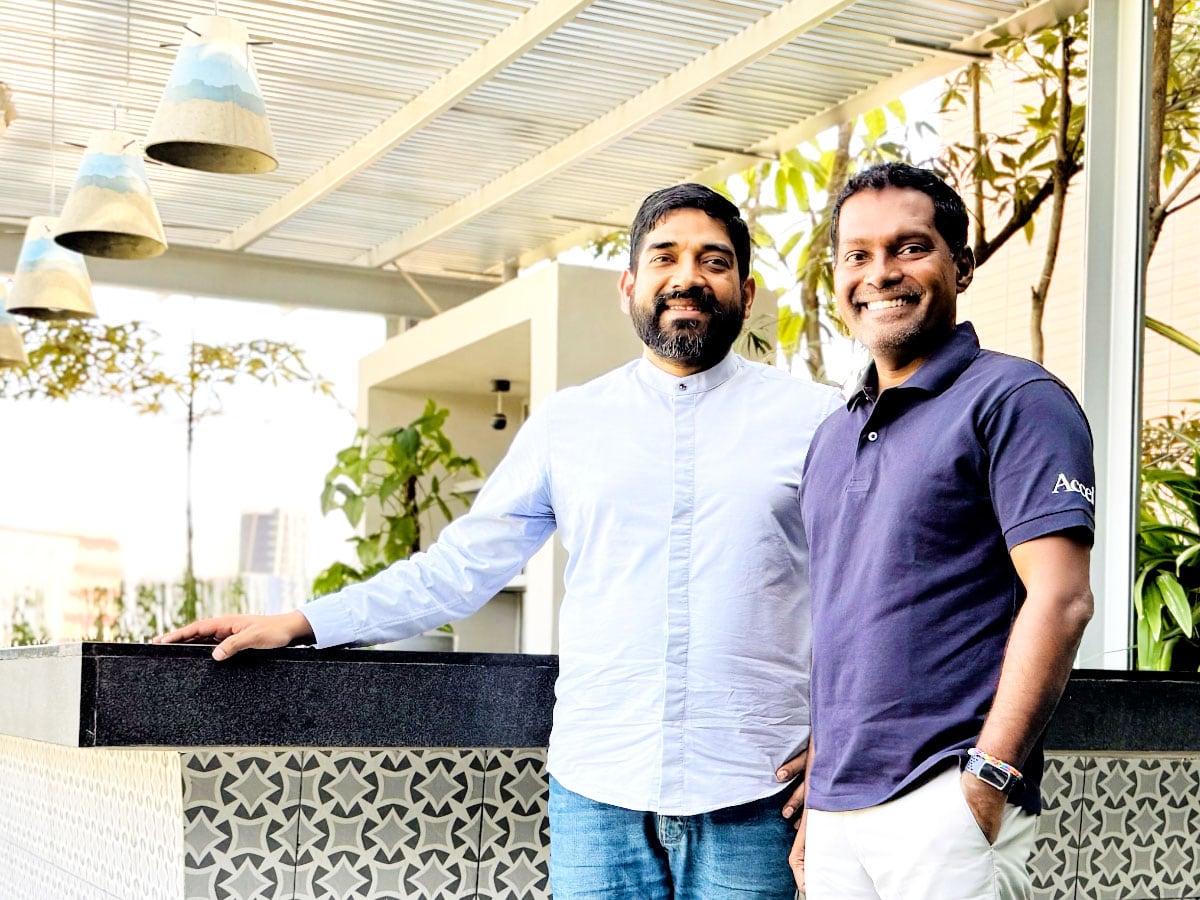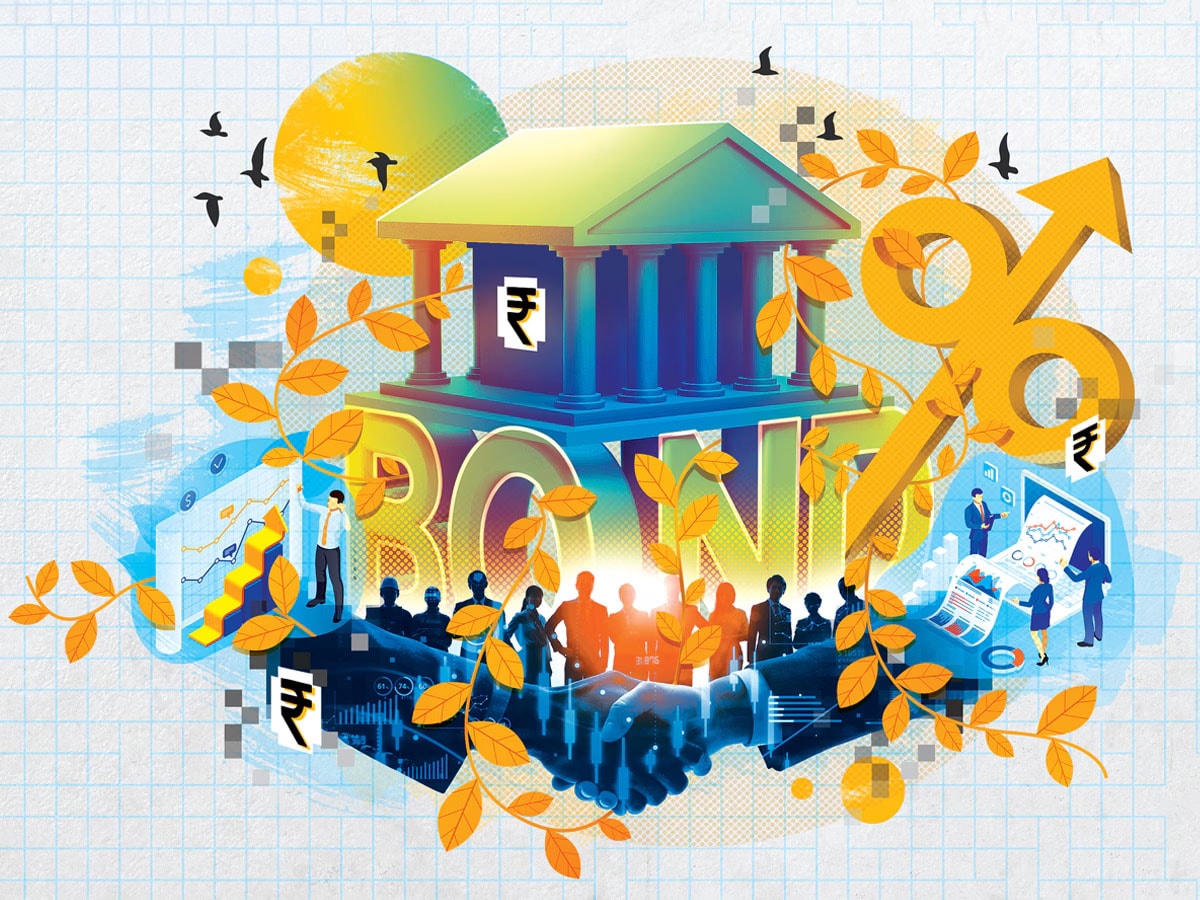1) Slow and steady of quick commerce
 Team Swiggy (from left): Phani Kishan Addepalli, co-founder; Sriharsha Majety, co-founder and group CEO; Girish Menon, head of HR Image: Selvaprakash Lakshmanan for Forbes India
Team Swiggy (from left): Phani Kishan Addepalli, co-founder; Sriharsha Majety, co-founder and group CEO; Girish Menon, head of HR Image: Selvaprakash Lakshmanan for Forbes India
The quick commerce race in the Indian market is heating up, with players like Zepto, Blinkit, Amazon India, Big Basket, Flipkart, JioMart, and Swiggy’s Instamart running to grab the biggest market share. In the latest issue of Forbes India, we looked at the co-founder and group CEO of Swiggy, Sriharsha Majety‘s quick commerce empire that consists of food delivery, Instamart, Bolt and out-of-home consumption vertical. Why and how is Swiggy firing on all cylinders? And can the 10-minute food and grocery delivery gambit help it take pole position?
2) Run for recogniton
 Runners cross the Bandra-Worli Sea Link during the Tata Mumbai Marathon on January 19. The marathon, which completed its 20th edition, is a World Athletics Gold Label race. 19th January, 2025. Image: Raju Shinde/Hindustan Times via Getty Images
Runners cross the Bandra-Worli Sea Link during the Tata Mumbai Marathon on January 19. The marathon, which completed its 20th edition, is a World Athletics Gold Label race. 19th January, 2025. Image: Raju Shinde/Hindustan Times via Getty Images
When marathons are mentioned, names such as Eliud Kipchoge, Haile Gebrselassie, Samuel Wanjiru, Catherine Ndereba, and Grete Waitz are always discussed and applauded. These athletes competed and set various records while collecting silverware everywhere they went. But they also built fan-following and helped running become a recreational activity. Now, brands have woken up to the potential of this burgeoning market of running enthusiasts and are tapping into all the opportunities to grab their attention. Sponsoring more than 14 marathons, such as the Tata Mumbai Marathon, has upped TCS’s brand value nearly ninefold since 2011. There’s something for everyone in the race. Let’s take a look at how brands are taking advantage.
3) Future of Indian startups
 Prayank Swaroop (L) and Anand Daniel of Accel
Prayank Swaroop (L) and Anand Daniel of Accel
In the latest episode of Forbes India Tech Conversations podcast, Anand Daniel and Prayank Swaroop, partners at Accel, discuss the venture capital firm’s views on the next decade of Indian startups. Accel recently announced its eighth India-focused fund, which is valued at $650 million. In this conversation, Anand and Prayank also discuss how startup founders and venture capitalists in India are evolving. New generations are coming to the fore, bringing more original ideas to the market and more technical and business know-how to their endeavours.
Discover
1) Debt over equity
 Photo imaging: Chaitanya Dinesh Surpur
Photo imaging: Chaitanya Dinesh Surpur
Ahead of the Budget 2025 and before the Donald Trump Administration took control of the White House, it was a no-brainer for us to work on an investment special issue of Forbes India. Many moving pieces, locally and globally, are making investment decisions difficult for institutions and retail investors alike. Trump’s tariff talk, geopolitical conflicts, slower GST collections in India, and a 12-month-low manufacturing PMI are not good signs. So what can investors do? Let’s begin with the first story, which gives insights into bond investments and what risk factors you should consider.
2) Experiments with alternatives
 Photo imaging: Chaitanya Dinesh Surpur
Photo imaging: Chaitanya Dinesh Surpur
EAAA India Alternatives Ltd (formerly known as Edelweiss Alternative Asset Advisors Limited) plans to become the first Indian alternatives company to be publicly listed. This is an indication that Indians are favouring alternatives such as AIFs, InvITs. and REITs. According to SEBI, alternatives have outpaced the growth of mutual funds and bank term deposits. Also, the share of alternatives within the asset management space has increased to 15.8 percent in FY24 from 1.2 percent in FY14, reflecting their rising popularity with investors. This begs the question. Are AIFs coming of age in India? Let’s find out.
3) Gold: Still a star performer?
 Image: Shutterstock
Image: Shutterstock
Indians have a special affection towards the yellow metal. This connection cannot be explained with parameters such as rise of dollar, rupee depriciation, geopolitcal tensions, inflationary pressures or higher deficit. Desis will always have gold in some form, in their bank lockers and even on their person. But if it is about their portfolios, experts believe that allocations towards investing in gold in 2025, whether as a pure yellow metal (bars, coins) or through ETFs or other investment avenues, should depend on their risk appetite and the time horizon they chose. Why? Here’s the explanation.
4) Real estate in 2025: A new chapter
 Image: Shutterstock
Image: Shutterstock
Despite various hiccups, India is still the fastest-growing major economy for three years in a row. By estimations, the country will surpass Germany and Japan over the next three years to become the world’s third-largest global economy. India’s economy benefits from a strong government, steady interest rates, and a rapidly growing middle class. These have positive correlations with the Indian real estate industry. Examining what transpired in the housing and commercial real estate markets in 2024 bears this out. Anuj Puri, chairman and founder of Anarock Group, gives an overview of how the sector will look in 2025.
 Team Swiggy (from left): Phani Kishan Addepalli, co-founder; Sriharsha Majety, co-founder and group CEO; Girish Menon, head of HR Image: Selvaprakash Lakshmanan for Forbes India
Team Swiggy (from left): Phani Kishan Addepalli, co-founder; Sriharsha Majety, co-founder and group CEO; Girish Menon, head of HR Image: Selvaprakash Lakshmanan for Forbes India Runners cross the Bandra-Worli Sea Link during the Tata Mumbai Marathon on January 19. The marathon, which completed its 20th edition, is a World Athletics Gold Label race. 19th January, 2025. Image: Raju Shinde/Hindustan Times via Getty Images
Runners cross the Bandra-Worli Sea Link during the Tata Mumbai Marathon on January 19. The marathon, which completed its 20th edition, is a World Athletics Gold Label race. 19th January, 2025. Image: Raju Shinde/Hindustan Times via Getty Images Prayank Swaroop (L) and Anand Daniel of Accel
Prayank Swaroop (L) and Anand Daniel of Accel



